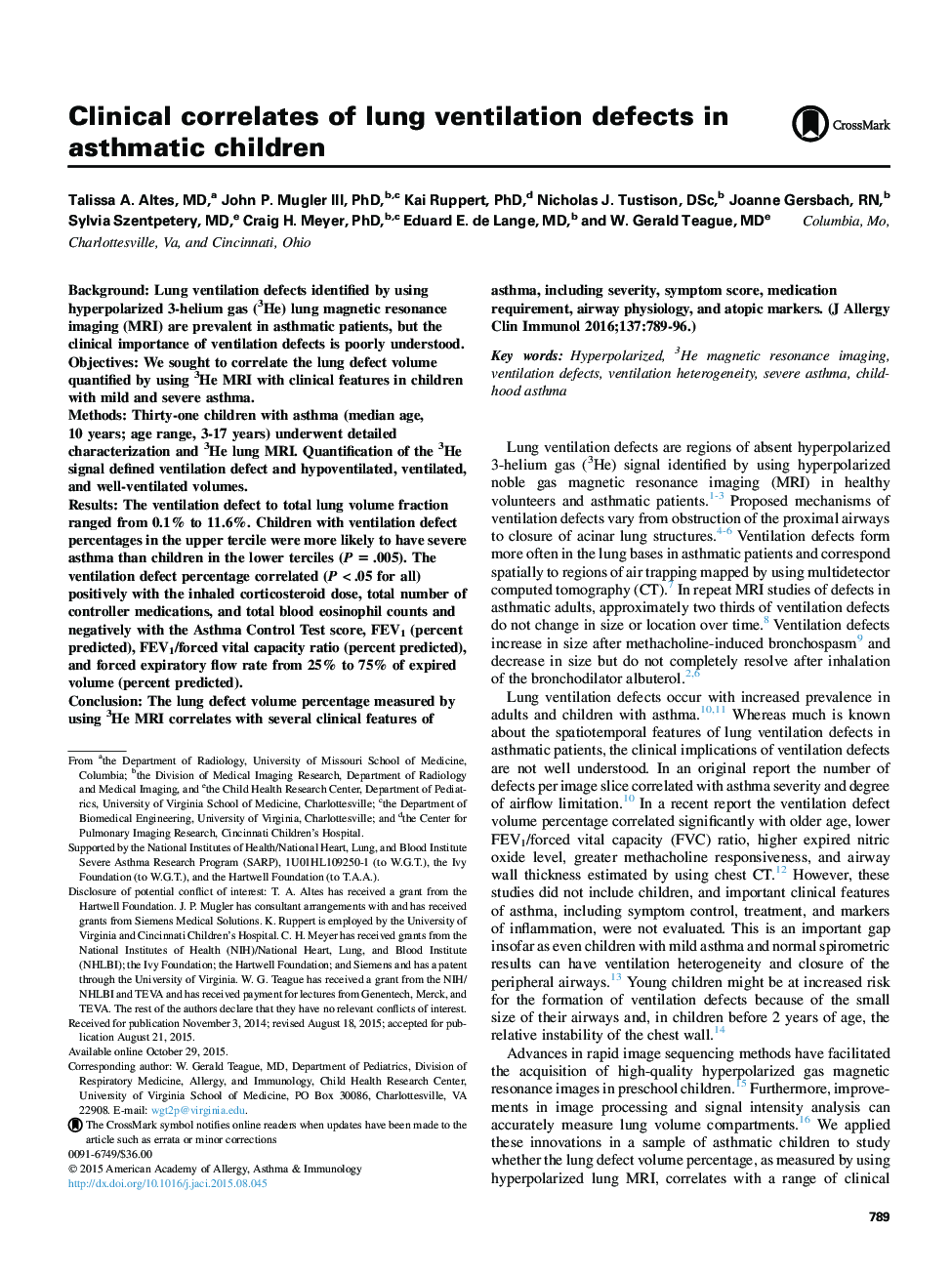| Article ID | Journal | Published Year | Pages | File Type |
|---|---|---|---|---|
| 6062725 | Journal of Allergy and Clinical Immunology | 2016 | 15 Pages |
BackgroundLung ventilation defects identified by using hyperpolarized 3-helium gas (3He) lung magnetic resonance imaging (MRI) are prevalent in asthmatic patients, but the clinical importance of ventilation defects is poorly understood.ObjectivesWe sought to correlate the lung defect volume quantified by using 3He MRI with clinical features in children with mild and severe asthma.MethodsThirty-one children with asthma (median age, 10Â years; age range, 3-17Â years) underwent detailed characterization and 3He lung MRI. Quantification of the 3He signal defined ventilation defect and hypoventilated, ventilated, and well-ventilated volumes.ResultsThe ventilation defect to total lung volume fraction ranged from 0.1% to 11.6%. Children with ventilation defect percentages in the upper tercile were more likely to have severe asthma than children in the lower terciles (PÂ =Â .005). The ventilation defect percentage correlated (PÂ <Â .05 for all) positively with the inhaled corticosteroid dose, total number of controller medications, and total blood eosinophil counts and negatively with the Asthma Control Test score, FEV1 (percent predicted), FEV1/forced vital capacity ratio (percent predicted), and forced expiratory flow rate from 25% to 75% of expired volume (percent predicted).ConclusionThe lung defect volume percentage measured by using 3He MRI correlates with several clinical features of asthma, including severity, symptom score, medication requirement, airway physiology, and atopic markers.
